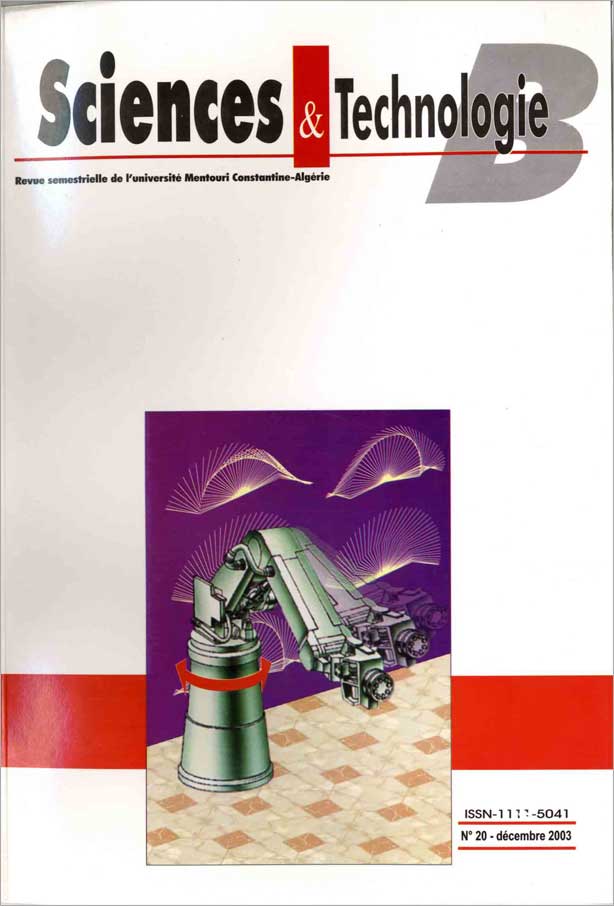TWO STAGE ADAPTIVE MOTION-COMPENSATED FILTER FOR NOISY IMAGE SEQUENCES
الكلمات المفتاحية:
Image sequence processing، motion estimation، motion compensation، adaptive filteringالملخص
In this paper, we propose a new technique for motion compensated filtering of noisy image sequences which aims to achieve an efficient noise reduction without introducing blurring artefacts. The technique consists in a cascade of the versions of the temporal and the spatiotemporal Adaptive Weighted Averaging (AWA) filter proposed in [11]. We referred the technique as a Two-Stage AWA filter (TS-AWA) [1][2]. The process consists in: first, the noisy observation is filtered temporally using the temporal AWA filter (AWA 1-D) along a large motion compensated temporal support. Second, the resulting image sequence is then processed by the spatiotemporal AWA filter (AWA 3-D) along a smaller support which the motion trajectories are estimated after the first stage. In each stage, motion trajectories are estimated with a modified block matching motion estimation algorithm [3]. Simulation results show that the proposed TS-AWA filter outperforms the AWA 3-D filter in both terms of visual quality and Signal to Noise Ratio improvement.
المراجع
- Benmoussat N., "Etude et mise en œuvre de méthodes d’estimation de mouvement et de filtrage spatiotemporel de séquences d’images", Master Thesis, University of Science and Technology of Oran, U.S.T.O, Algeria, Nov. (2000).
- Benmoussat N. and Belbachir M.F., "Cascade structure of adaptive motion-compensated filtering of noisy image sequences", The Third Scientific Conference on Computers and their Applications, SCCA’ 2000, Amman, Jordan, February (2001).
- Benmoussat N. and Belbachir M.F., "A modified block-matching motion estimation algorithm", Proceeding of ''Conférence sur la Vision Vrtificielle'', CVA’ 2000, pp. 175-180, Tizi-Ouzou, Algeria, November (2000).
- Benmoussat N. et Belbachir M.F., "Une étude des techniques de filtrage des séquences d’Images bruitées", Journée de l’Electronique JE’99, Faculté de Génie Electrique, Département d’Electronique, Université des Sciences et de la technologie d’Oran U. S. T. O, juin (1999).
- Yang K., Sun M. and Wu L., "A Family of VLSI Designs for the Motion Compensation Block-Matching Algorithm", IEEE Transaction on Circuits and Systems, vol.36, N°10, October (1989), pp.1317-1325.
- Komarek T. and Pirsch P., "Array Architectures for Block Matching Algorithms", IEEE Transaction on Circuits and Systems, vol.36, N°10, October (1989), pp.1301-1307.
- Gharavi H. and Mills M., "Block-matching Motion Estimation Algorithms -News Results", IEEE Transaction on Circuits and Systems, vol.37, N°5, May (1990), pp.649-651.
- de Vos L. and Stegherr M., ''Parametirizable VLSI Architectures for the Full-Search Block-Matching Algorithm'', IEEE Transaction on Circuits and Systems, vol.36, N°10, October (1989), pp.1309-1316.
- Dufaux F. and Moscheni F., "Motion Estimation for Digital TV: A Review and a New Contribution", Proceedings of The IEEE, vol.83, N°6, June (1995), pp.858-875.
- Brailean J.C., Kleihorst R.P., Efstratiadis S., Katsaggelos A.K. and Lagendijk R.L., ''Noise Reduction filters for Dynamic Image Sequence: A Review'', Proceeding of the IEEE, vol.83, N°9, September (1995), pp.1272-1292.
- Ôzkan M.K., Sezan M.I., and Tekalp A.M., ''Adaptive motion compensated filtering of noisy image sequences,'' IEEE transaction on Circuits and Systems for Video Tech., vol.3, August (1993), pp.277-290.
التنزيلات
منشور
إصدار
القسم
الرخصة
Les auteurs publiant dans cette revue acceptent les termes suivants :- Les auteurs détiennent le droit d'auteurs et accordent à la revue
le droit de première publication, avec l’ouvrage disponible simultanément [SPÉCIFIER LA PÉRIODE DE TEMPS] après publication, sous la licence Licence d’attribution Creative Commons qui permet à d'autres de partager l'ouvrage en en reconnaissant la paternité et la publication initiale dans cette revue. - Les auteurs peuvent conclure des ententes contractuelles additionnelles et séparées pour la diffusion non exclusive de la version imprimée de l'ouvrage par la revue (par ex., le dépôt institutionnel ou la publication dans un livre), accompagné d'une mention reconnaissant sa publication initiale dans cette revue.
- Les auteurs ont le droit et sont encouragés à publier leur ouvrage en ligne (par ex., dans un dépôt institutionnel ou sur le site Web d'une institution) avant et pendant le processus de soumission, car cela peut mener à des échanges fructueux ainsi qu'à un nombre plus important, plus rapidement, de références à l’ouvrage publié (Consulter The Effect of Open Access).

